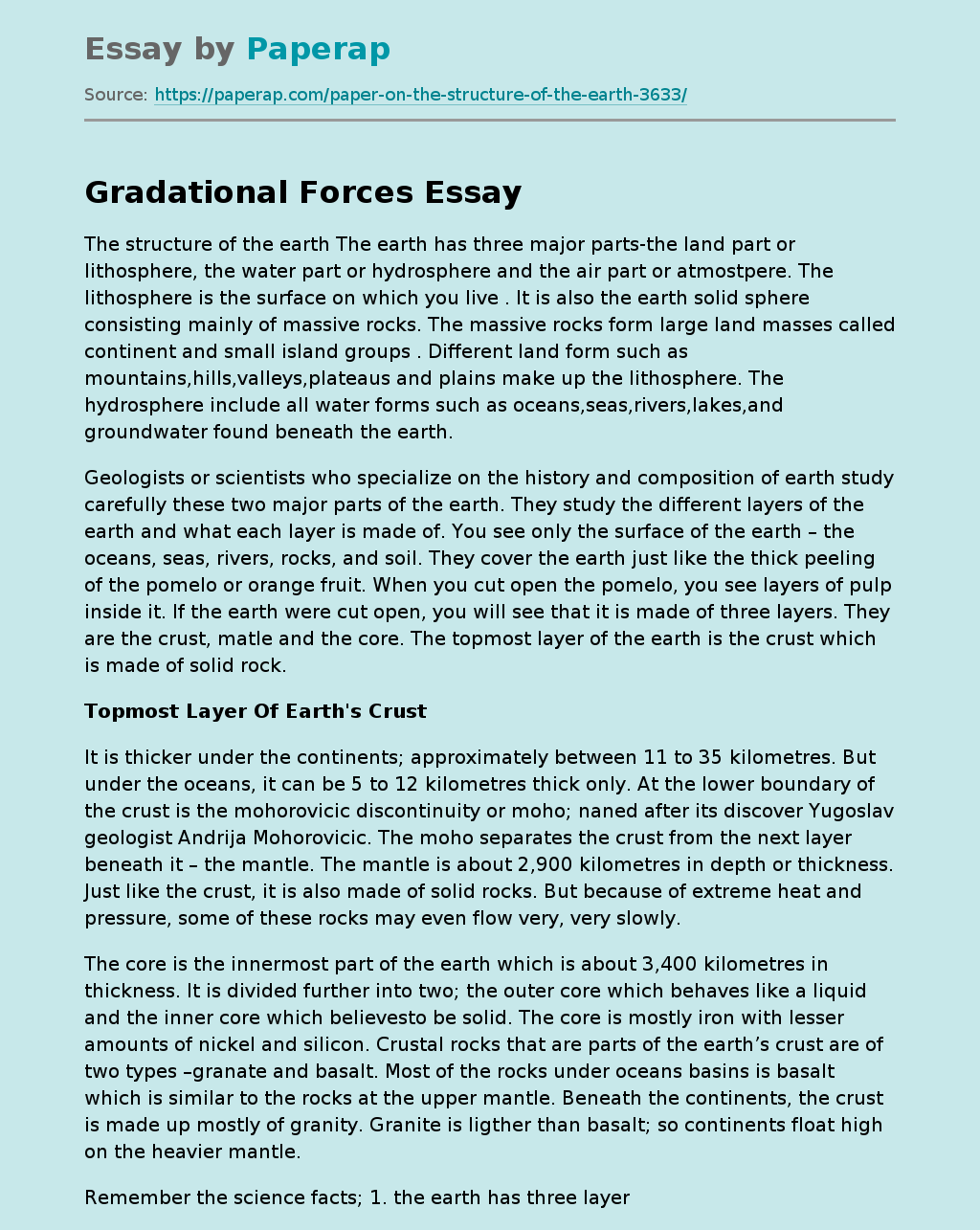The structure of the earth The earth has three major parts-the land part or lithosphere, the water part or hydrosphere and the air part or atmostpere. The lithosphere is the surface on which you live . It is also the earth solid sphere consisting mainly of massive rocks. The massive rocks form large land masses called continent and small island groups . Different land form such as mountains,hills,valleys,plateaus and plains make up the lithosphere. The hydrosphere include all water forms such as oceans,seas,rivers,lakes,and groundwater found beneath the earth.
Geologists or scientists who specialize on the history and composition of earth study carefully these two major parts of the earth. They study the different layers of the earth and what each layer is made of. You see only the surface of the earth – the oceans, seas, rivers, rocks, and soil. They cover the earth just like the thick peeling of the pomelo or orange fruit. When you cut open the pomelo, you see layers of pulp inside it.
If the earth were cut open, you will see that it is made of three layers. They are the crust, matle and the core. The topmost layer of the earth is the crust which is made of solid rock.
It is thicker under the continents; approximately between 11 to 35 kilometres. But under the oceans, it can be 5 to 12 kilometres thick only. At the lower boundary of the crust is the mohorovicic discontinuity or moho; naned after its discover Yugoslav geologist Andrija Mohorovicic.
The moho separates the crust from the next layer beneath it – the mantle. The mantle is about 2,900 kilometres in depth or thickness. Just like the crust, it is also made of solid rocks. But because of extreme heat and pressure, some of these rocks may even flow very, very slowly.
The core is the innermost part of the earth which is about 3,400 kilometres in thickness. It is divided further into two; the outer core which behaves like a liquid and the inner core which believesto be solid. The core is mostly iron with lesser amounts of nickel and silicon. Crustal rocks that are parts of the earth’s crust are of two types –granate and basalt. Most of the rocks under oceans basins is basalt which is similar to the rocks at the upper mantle. Beneath the continents, the crust is made up mostly of granity. Granite is ligther than basalt; so continents float high on the heavier mantle.
Remember the science facts; 1. the earth has three layers ; The crust. The mantle. The core. 2. crustal rocks which are part of the earth’s crust are basalt and granate. Project In Science Submitted by; Glenn van barrida Submitted to;Juliet o. de luna Forces that change the earth’s surface The earth surface has been constantly changing sincethe world began. Some change maybe slow that you hardly can notice it. But over amillions of years, mountains rise worn down. What forces can change the earth’s suface? There are two kind of forces that are at work to constantly change the earth’s surface.
They tectonic forces and gradational forces. Gradational forces are caused by wind, ice, moving or flowing water and other living organisms. Weathering cause rocks to be broken down into pieces or fragment. Erocion carries away or thransport these eroded rocks into the rivers and oceans as sediments. Seas creep in over the land and rise making new land. Glaciers roll down the mountains and from valleys. Erosion and weathering are grandational forces; they come from outside or beyond the earth. Tictonic forces come fron inside the earth. There are two groups of tictonic forces-diastropism and volcanism.
Diatropism refers to all movements of the solid part of the earth sa in earthquakes. Volcanism or volcanic eruptions make landforms when lava hardens. Earthquakes and volcanic eruptions cause sudden changes on the earth surface. They may bring about the rise or the fall of surface rocks. Remember the science fact; 1. or Gradational and tictonic forces bring about changes on the earth’s surface. 2. Erosion and weathering are gradational forces. They bring about slow changes on the eath’s surface. 3. Diastropism and volcanism are tictonic forces. They bring about sudden rapid changes.
Topmost Layer Of Earth's Crust. (2019, Dec 05). Retrieved from https://paperap.com/paper-on-the-structure-of-the-earth-3633/

